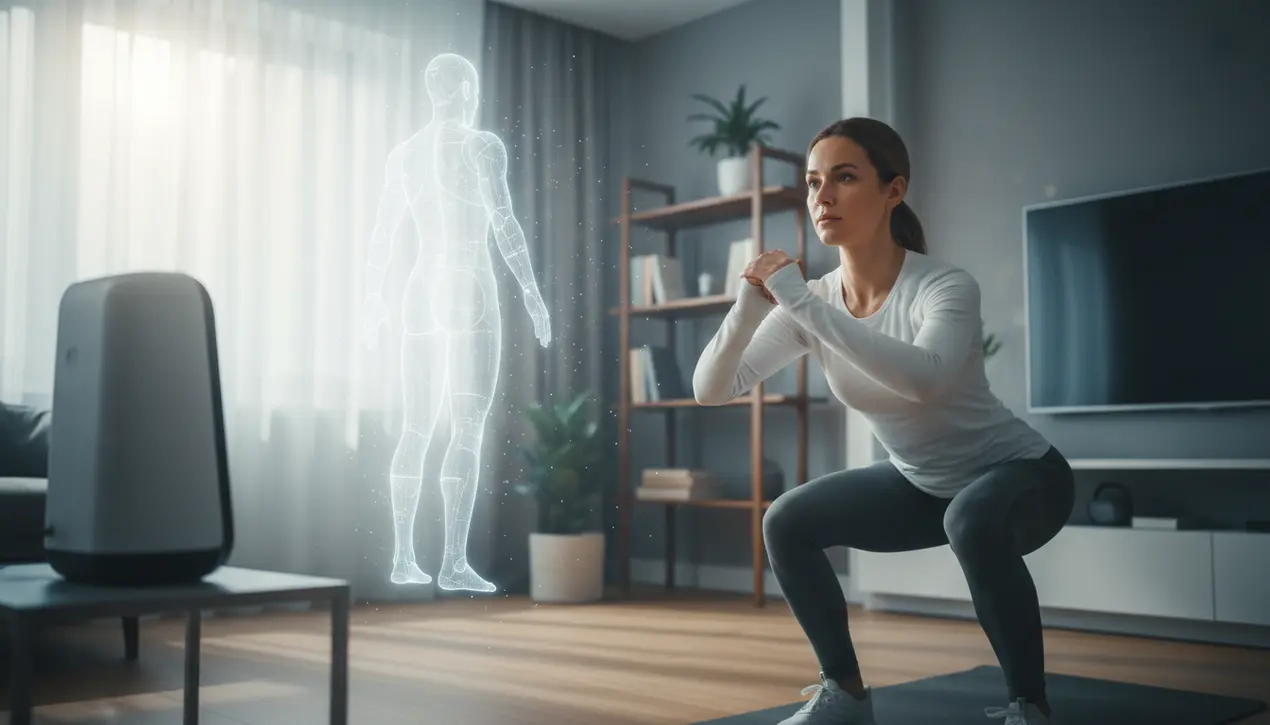
AIenterprise aiAI in Healthcare
What if your next personal trainer were an AI agent?
EM
Emily Carter
2 hours ago7 min read2 comments
The annual ritual is as predictable as the turning of the calendar: as the new year dawns, a collective resolve to get in better shape sweeps the nation. Last year alone, Americans poured a staggering $44.8 billion into the fitness industry, a testament to our enduring hope for transformation. Yet, the harsh reality, underscored by data showing most people abandon their goals within a mere two weeks, paints a different picture.Gym memberships become forgotten receipts; high-tech stationary bikes morph into the most expensive clothes racks in the house. This cycle of ambition and attrition highlights a fundamental human struggle, one that researchers at the National Institutes of Health have pinpointed.Their findings reveal that amidst the cacophony of fitness options, personal training consistently delivers superior results, not merely because of the exercises prescribed, but because of the powerful human elements involved: a truly personalized program, seamless integration into one's schedule, and, most crucially, the profound accountability to another person who expects you to show up. But this golden standard has always had a gilded price tag, often ranging from $50 to $150 per hour, placing it firmly out of reach for the average person.It is into this gap between aspiration and accessibility that a new contender, Ray, emerges. This AI-powered fitness app, the brainchild of Android co-founder Rich Miner and Ideo veteran Colin Raney, aims to democratize the personal training experience, offering all its behavioral benefits for a fraction of the cost.The premise is as ambitious as it is intuitive: when you open the app, an AI trainer with a lifelike appearance and voice guides you through a workout meticulously customized to your goals, physical limitations, available equipment, and time constraints. Much like a human counterpart, Ray observes your movements through your device's camera across 35 different points, offering real-time form corrections and progressively challenging you as your strength and endurance grow.The experience extends beyond the session itself, with the AI following up via text to check in on your recovery and help schedule the next appointment, creating a continuous feedback loop designed to foster lasting habit formation. Raney, whose previous work involved building PillPack to solve the problem of medication adherence, speaks with the conviction of someone who has seen behavior change from the inside out.'I needed the accountability of not wanting to let my trainer down by not showing up,' he reflects, articulating the core psychological driver the app seeks to replicate. 'Or having the workout tuned to me if I had a bad day, or my back wasn’t feeling right.' Their foundational thesis was simple yet powerful: build the right behavioral loop, and people will workout more regularly. This aligns perfectly with the NIH research confirming that individuals with personal trainers not only achieve better body composition results but also sustain fewer injuries.What sets Ray apart in a market flooded with tech-enabled fitness gear—from Peloton bikes to Tonal weight systems—is its AI-native architecture. Unlike companies retrofitting AI into existing hardware, Miner and Raney began building Ray two and a half years ago from the ground up to be an agentic AI.It’s equipped with natural language processing for fluid conversation, advanced computer vision for movement analysis, and a machine learning planner that dynamically constructs workouts based on your history and real-time feedback. Miner, who holds a patent for one of the first 'wake words' for a voice assistant 35 years ago, draws a compelling parallel to the mobile revolution.'That’s when you got Instagram and Uber,' he says. 'People rethought what an app could be if you didn’t have to rely on a legacy application.That’s what we’re trying to do with Ray. ' The platform is even being trained on grunt recognition to gauge user exertion, a detail that underscores its relentless pursuit of verisimilitude.Having launched quietly six months ago, Ray has already attracted thousands of users, and in a hands-on trial, its adaptive nature is immediately apparent. In a 20-minute, equipment-free session in a home office, the AI trainer provided encouraging feedback during push-ups and jumping jacks, and respectfully acknowledged a stated aversion to burpees.Users can even select a trainer personality, from supportive to assertive, tailoring the motivational style to their preferences. However, the current technological frontier still has its limits.The interaction, while impressive, isn't perfectly seamless; the AI's responses can feel slightly delayed, and the digital eyes lack the focused intensity of a human coach. This slight uncanny valley effect means the powerful sense of guilt that compels you to not disappoint a human trainer isn't fully replicated.Miner acknowledges this, but argues the benefits—guidance, rep-counting, motivation, and the sheer convenience of 24/7 availability—are profound on their own. The ultimate test, beyond the technology, will be the price.Currently free for early adopters, Ray will eventually transition to a monthly subscription, positioned as a fraction of the cost of human training. As Raney notes, the platform has improved dramatically in just its first half-year of life.The journey of a thousand miles begins with a single step, and for millions, that first step has always been the hardest. Ray represents a bold bet that a compassionate, ever-evolving digital coach might just be the companion we need to not only take that step, but to keep walking the path, long after the New Year's resolve has faded elsewhere.
#AI personal trainer
#fitness app
#Ray
#behavioral change
#featured
#health technology
#computer vision
#NLP
Stay Informed. Act Smarter.
Get weekly highlights, major headlines, and expert insights — then put your knowledge to work in our live prediction markets.
Related News
Comments
Loading comments...
© 2025 Outpoll Service LTD. All rights reserved.